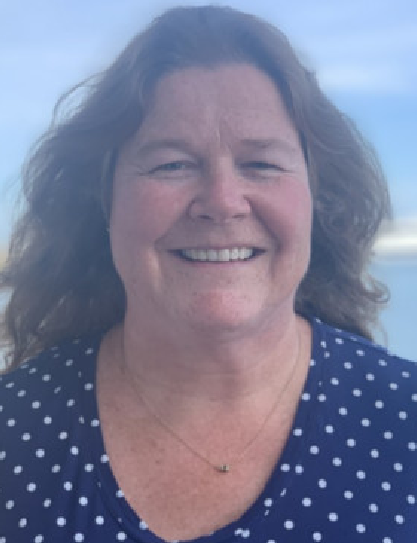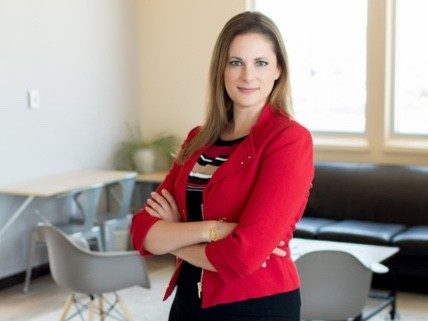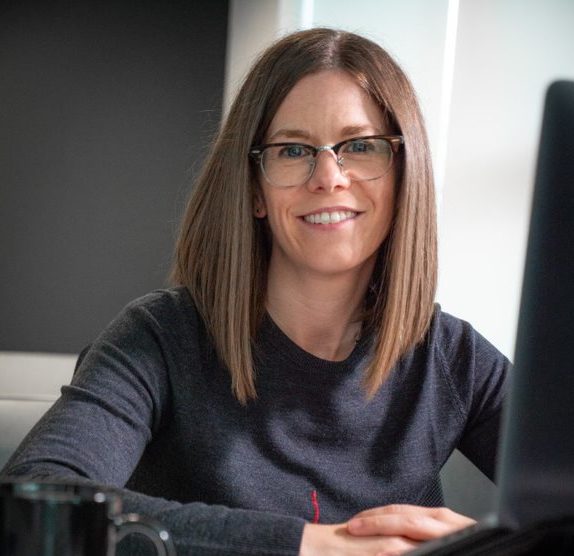Everyone has something in mind when they think about what a digital workplace looks like. But everyone has a different picture.
Is the digital workplace something created by the CIO? Do individual business heads create their own? Do you build it on an existing web technology like WordPress, or do you just string together a bunch of disconnected tools? Who owns it? Who maintains it? Who gets to change it?
Ellen Feaheny is the CEO of AlohaCloud Digital Networks, and she’s been in the game long enough to know all the challenges that most people face.
The bigger an organization gets, the more complicated the digital workplace becomes. Everyone needs something slightly different and it’s hard to define what it will become. Ellen says of a digital workplace: “It’s an architecture. It’s an orchestration. It’s everyone, the right hand needs to talk to the left hand.”
The lack of a clear strategy often leads to individual business leaders pulling out their credit card and finding a solution on their own, creating shadow IT. But that can influence the long term path of where the organization wants to go.
Ellen thinks both business leaders and technologists need to understand each other’s worlds better. “If business people can talk more, can understand the underlying architectural understandings of why and a holistic IT strategy, then you can get somewhere and you don’t take steps back.”
Links
Welcome back to the Digital Workplace Podcast. Today our guest is Ellen Feaheny. She is the CEO of AlohaCloud Digital Networks. Hey, Ellen. How’s it going today?
Doing good, doing good. Great.
We’re really excited to have you here. It’s fun to bring you in based on your experience. One thing we always do with our guests when we start off is we do a check in round question where we do a captcha question to prove your humanity. I didn’t prepare you for this. But I want to know, what’s one movie that you want to rewatch again?
I’ve been actually, this is funny, I’ve been thinking about Forrest Gump lately. So that’s one I really want to watch.
That’s a great one to go back to and review. I feel like every 5, 10 years, it’s good just to review that and see how things have changed in your own life and even imagine what it’s like. That’s cool.
I think there’s an element of Forrest Gump in everyone since COVID. On the one hand, there’s lucky things that have happened during COVID. And there’s awful things that have happened during COVID. And there’s things that justified logic. So anyway, that’s why I’m thinking about it lately.
That’s a good one. It’s a good one. I’m trying to think of my answer. The first thing that pops in my head is Princess Bride. I don’t know why that came up. I introduced that to my kids. Last year, we read the book and did all sorts of fun stuff with it. It’s been about eight months or so since then. And now they start to remember it and they start to see like cultural references with that in it. And they get excited about that. So it’ll be fun to go back and do it again.
Yeah, yeah.
Cool. Well, Ellen, tell us a little bit about yourself and your history and what AlohaCloud’s doing now.
Sure. My history goes back aways, landed in Silicon Valley for college and went to Santa Clara University. Depending on your perspective, that was lucky. I’m just in the right place at the right time, I suppose. Got out of college, had a really difficult time getting work as an English major and got dumped into technology because it was in my backyard. So started out in technology in the early days, was a tech writer for many years, consultant working from home really when we were in dial ups. So this is not a new territory in terms of working from home. We used to have big zip drives we’d carry around and you did whatever you needed to do to be productive and be resourceful. And also, I don’t want to say over compete, but back then you were very aware that out of sight, out of mind, if you were not at the office, and so, it was always an over do it type thing to make yourself seen and valuable, even though you were remote. And I think that’s a lesson that I learned also that I think a lot of people should learn nowadays with COVID. Just because you’re not in the office, just because you’re not on a Zoom or even if you are on a Zoom, don’t think that you are there. You are only there if you make your value valuable.
Anyway, from there I started AppFusions in 2010. And we were an extensibility integrations vendor at the time. This was way before Zapier. We decided to package integrations and patterns. We felt that this was not a need, especially back in 2010. The Apple phone really took off after the keynote on June of 2012. I remember it like yesterday. And pretty much right after that. I would say that was introduction of commercialization of IT, in my opinion, and where we could pattern different components. And that also the reality that a vendor, a platform vendor doesn’t always provide everything that customers need. And that there are add-ons and things that need to be added. That evolved to doing integrations with Jive Software as well as IBM and Atlassian. And then finally, in 2017, we decided, gosh, none of the platforms are ever going to meet the needs that we are being requested by customers. Maybe we should just take everything we have, put it smack in the middle, and build the platform, the digital workplace or digital experiences platform that we have been seeing in the industry that has wanted. That is AlohaCloud, and I’m the CEO of AlohaCloud Digital Networks to do just that. Sorry, it’s long winded.
No, no, not at all. I mean, there’s lots to tell on that. I mean, to go from what we call integration display or system to moving into a whole platform. Tell us about that journey, especially what it was that leaders were asking from the platforms that they weren’t getting. What are those core features that make up what you consider a digital workplace?
So integrations with third party systems, of course, is a hot button for many companies. And if you think about it from a vendor perspective, a platform perspective, those niggly integrations into third party systems, it’s like why do I want to bring those guys into my platform? That’s the, say, IBM or Microsoft way of thinking that they’re the king of the castle, and that they own the platform, and therefore, why would you need to go elsewhere? And I remember, ironically, even in the early days, when we were working with Atlassian, they thought that, too. Why do you need to go elsewhere? We are the utopia. We are the platform. The irony with Atlassian at this time, though, back in way back in 2008, ’09, ’10, is they were the most successful API enablement company, in my opinion, from an SDK perspective. And they were really nailing it on that side. So they were talking two stories. We’re the platform. We are the center of the universe. On the other hand, we will enable developers to add on to our platform. And it took a while before other platforms finally acknowledged that the future is giving customer choice, which is not always nickel and diming them on every single add-on. And that’s where I think some things have taken some twists and turns in the industry over the last 5, 10 years.
Yeah, do you think that there is, I mean, there’s a lot of players in this space right now. What’s the core components that make up those who are really projecting the future of it? Because I mean, I think this feeling of like, no, no, we’re the one platform that you can do everything in. I mean, you see that even in something like Slack that wants everything to be integrated into what they’re doing, obviously, with Microsoft, Microsoft Teams and their whole ecosystem they have, they want everything to come in there. Do you feel like that that’s just going to continue on that people are going to constantly be trying to pull everything into the one platform that can do everything? Or are we going to always be in this hodgepodge, let’s find ways to connect all the best things that are out there?
I don’t see any end in that, especially now. For many years, we were on the plug-in side. We were on the add-on side. Even when we first were on the server add-on side, and then we were on the cloud services add-on side. And we still have those add-ons. So they’re still popular, they still are renewed, and people like them. However, now that I’m on the platform side, I now have a vantage and understanding at the platform perspective on why certain decisions are made. And I just don’t think that’ll ever go away. Because the amount of innovation that a customer can think of when they have the capability to add on, when they have APIs, when they have interfaces that allow them to insert their needs requirements into an existing platform, it’s an endless candy store. And that’s one thing I have learned. So who’s going to win the game in those types of stories? Is it one size fits all? Is it a one man show zero sum game? Lots of vendors would like to think it’s a zero sum game. I don’t really believe that.
I believe it’s an empowerment game. I think it’s an ecosystem game. And the strong survive. It’s got nothing with cloud to support 24/7 services with add-ons for every vendor. So not all vendors, add-on vendors or platform vendors can really handle it once they really get into it. Because the reality of what it takes to keep all those moving pieces compatible, working, not failing, and your customers ultimately happy and then also meeting the requirements of your customers that yearn for more. That’s a tricky juggling act. And a lot of the platform vendors, if they’re a platform, that’s the other thing, too. There’s a whole cottage industry of overlay platforms that are really web interfaces on the front and they feel like a platform, but they’re not a platform. They don’t have the backend services to support all the different add-ons, let alone the API requirements. Anyway, so what I was just saying is that, yeah, I mean, it’s a juggling act. The strong will survive. The people that know what they’re doing with a focus, the vision as opposed to just competing will survive.
Well, let’s talk a little bit about the people who are making these requests and decisions inside the company. Based on your experience, who has that been historically and who is it now?
Yeah, that’s a great question because the categories are emerging. It’s interesting. I just saw on LinkedIn yesterday where Gartner had posted a, I love it when Gartner posts on LinkedIn, because they don’t share much. So when they do, you’re like, oh, look at that. They had shared a post about, there was about six or seven categories. And they were finally acknowledging that the categories are all merging together a little bit. There’s lots of overlap with the categories. Is it low code tools? Is it digital workplace? Is it a CRM? Is it a marketing engagement tool? Is it community tool? What’s the difference between a digital workplace and a community? I mean, you could spend all day fighting over semantics. And there’s plenty of people out on the Twitter field that do that, that like to beat and bat the semantics. But I would argue, at the end of the day, the customers, the decisions, you ask where the decisions are fully coming and why do you get such a mixed category problem. Because with server technologies, in the old days, you could buy a box, put it in the corner, IT managed it, and it was delegated out to the particular department, whoever paid for it.
Now, if it was brought in by IT CIO level, it was usually delegated out to the entire organization. If it was brought in by the CMO, it was delegated out to the CMO. So we had inherent walls between the organizations. But today, in the digital age, in the digital innovation, digital network age, people want to do what they’re doing outside inside. I want to do my Facebook, I don’t like to use the word, because there’s a bunch of connotations with Facebook, but I want to have what I have on the outside, also inside. But I also, by the way, want to have what I used to have also. So is that marketing? Is that IT? Is that finance? Is that sales? The answer is yes. It’s all those things. And so therefore, point systems alone, that only meet a certain requirement, run up against a wall eventually, when the other departments that they have to cross functionally work with, want in and now the requirements evolve.
Yeah, it seems what started off as a CIO problem has become maybe transitioning to, hey, this is a whole organization wide thing. But as the organization develops that way, it actually comes to each individual team leader, or each individual team that’s out there has their own requests and has their own ideas about what they want it to do. And so those functions and features just keep growing and growing and growing and expanding, and like you said, from the consumer side, as those grow, then everyone expects that enterprise tools will follow along.
Yeah. And the challenge with the business users as well as the consumer expectations in an engineering is that it’s not like the old way. The bits that come together in a single cloud, true cloud, microservices, full microservices platform, something like a LinkedIn or Facebook or even a Netflix. A true cloud implementation of the digital workplace means modular. It means that you can have endless amounts of features and capabilities that collectively come together to a single interface that cohesively and holistically work together. And how do you do that? Well, it’s not for the faint of heart. It’s not for necessarily the job of server developers. It’s an architecture. It’s an orchestration. It’s everyone, the right hand needs to be talked to the left hand. It’s about permissions and management and member management across the different departments. It’s about handshaking across the aisle between the different departments. It’s no longer that the departments can sit there and war with each other.
So then you have point systems that come in with a credit card that the department person puts the credit card and says, damn it, I just want to get this done. IT is too slow. Okay. Yes, that’s like taking a drug. It’s like, okay, you got your short fix. But you know what? Don’t expect support from IT because you just unraveled a strategy to try to be holistic. And it was funny. I had a situation that makes me think of, just yesterday, no, it was last week, there was a conversation about digital transformation. And I was talking to a colleague who didn’t know much about digital transformation. And I was trying to explain what the digital transformation was. He goes, yeah, yeah, yeah, we need the digital transformation. He said it really funny out of context. But it’s true. People don’t know what digital transformation is. It’s this big, cloudy, awful word. What’s it mean? Is that a digital workplace? Yes? No? But yeah, we need it.
Yeah, yeah. That’s amazing to think through what it is that people don’t even know that they need yet and how to bring it in. And everyone has a different definition, I feel like. I mean, digital transformation is a great tool. I think for the most part people understand, okay, we’re replacing what was there before with digital solutions, but even what was, if it was a legacy product before and transitioning that to a cloud product, that’s also digital transformation. So there’s just such a wide view of where you can go with this.
And I think that’s the challenge. We’ve gotten to a point of maturity in the industry that business users know just enough information to be dangerous now, but their danger is really useful. If business people can talk more, can understand the underlying architectural understandings of why and a holistic IT strategy, then you can get somewhere and you don’t take steps back. I’ve got to let my dog out.
Oh, yeah. See if you can bring him in on the show.
Did you hear him whining?
Yeah, I heard the whining.
So I mean, not to get into it. But I love that I got that innocent question the other day. Someone asking me that question whereas a lot of people will fake it and pretend they know. I love the fact that it was just raw vulnerability. And that’s what business users need to be. And CMOs and CIOs need to have a constant handshake. CMOs is related to sales. So sales and marketing need, companies can no longer just be engines, little engines that could. They need to be little engines that thrive. And how are you going to thrive? Well, you’re not going to thrive by just internal systems anymore, you’re going to be thriving because IT has a direct responsibility to revenue, to making marketing and sales empowered and strong. And that’s an internal requirement. And then there’s the external requirements that also cannot be ignored in the same architectural stack, if you will. It’s a holistic journey. And there’s many personas.
So Ellen, there’s a lot of our audience who are CEOs of companies, and maybe you’re just starting off 25 to 50 employees, that forms a bulk of the people we talk to during this time. They’re probably hearing this and they’re thinking, okay, yeah, I don’t want to get to the stage where it’s so complex that there’s no solution, I can’t get there, that some of these enterprises are facing. Is there a way to plan for this from early stages to build it into a good thing? Or is it just by necessity? As things grow, they’re going to get more and more complex and the solutions are going to get more complex? Or is there a good way to move forward at the beginning?
I believe there is. I mean, I guess I’m an ever optimist for a long time. Slowly, but surely, we’re making progress. So I think there is. And I think the best way is to not get into situations that are not useful. So in the early days of the company, it’s very commonplace for people just to turn up a WordPress. WordPress, God love WordPress, its powered the internet, praise, praise, praise, but it’s 2021. And WordPress is a server technology that was not meant for distributed workflows. And yes, there’s a whole cottage industry of add-ons. But the add-ons need to be supported by this that cottage industry of vendors. And if those vendors decide I’m tired of WordPress because it’s “old”, well, you’re out of luck customer. That’s the way it goes. And there’s just not a lot of new crop vendors that are trying to build a business on WordPress from scratch right now. They’re moving into Cloud. So at the beginning, don’t get into server technology from the get go. I would argue, I mean, cloud is here to stay. COVID made that clearer than ever. COVID changed the landscape of it forever.
For the last five years, especially, the technologies have been here for the last 10 years for cloud, especially since 2015. And but man, the stalwarts held on, held on, held on. And who are those stalwarts? We can blame them on it. I can. I don’t mind pointing them out, IBM. IBM was very, I just heard someone say IBM Lotus Mail just the other day and they still have it. Now IBM has passed this on to HCL, but it’s still there. It’s like the cancer that never dies. The companies that get off of these old systems and monster WebSphere servers that are being used to host these things. It’s like a brave new world of glory. They can’t even believe what’s possible. And so, if you’re starting out, don’t do physical server technologies. That said, it’s a different way of thinking. You need to put trust in a vendor that is cloud vendor or vendors. And that’s the challenging piece.
I just had a system just recently, where we replaced a WordPress system. And it wasn’t about the external only. It was about internal also. There’s no Eventbrite. There’s no CRM required. There’s no WordPress. And there’s no MailChimp required. And it’s all holistic. Now is this getting back into the same old one size fits all, like the old days of WordPress, if you will. Technology is cyclical, and there is requirements, but the more you can have the requirements met in a holistic single solution path, the better you’re going to be. That’s where I would argue Microsoft really is winning in some ways, a lot of ways. But the problem with Microsoft is they are tools. They are not a digital workplace or digital experiences web experience. They are that you go to certain parts of it, little sections. I go to or even Google, let’s say, Google Sheets, I go to Google Sheets, or I go to Microsoft Excel on Office 365 or I go to Doc to do a doc, or I go to do spreadsheets, I mean, sorry, PowerPoints. But what brings it together?
How do I bring the program management aspect together? And that part is a mess in companies, and especially with remote working program management that used to be like knock on the cubicle door, doesn’t really work anymore. No, put it in the system. We had an adage in our own organization that said, if it’s not in the system, it doesn’t exist. And we were a remote team. And it was because people would say things all the time, but it wasn’t in the system. So then enter Slack, the ultimate disruption tool. Slack has its purposes. I use Slack. I like Slack. But it’s chat. It’s not program management. It’s not a digital experience. It’s not my tools.
But like you said, these individual managers are going to rely on Slack for a while, because that seems like the easiest thing and the least common denominator for them to be able to latch on to because there hasn’t been a system wide building of something that can be more robust than that.
Yeah, I agree with you. And I think Slack is a good bridge, especially on your journey. You have to be thinking that this is a journey, not a destination. You’re not going to just have a one size fits all silver bullet that just instantly install it and voila. And even AlohaCloud Digital Networks is not a silver bullet. Is it setting you down the path of an optimized path? I believe so, or systems like ours. But why do I say that? I say that out of my own experience. What is your purpose with your digital workplace? Well, it starts as we just want an intranet, and in some cases they have old intranets. Okay, first we have an intranet. And then IT is no different than the vendor problem. The vendor problem gets asked by customers, well, who’s IT’s customers? All the constituents inside, it’s exactly the same. And they just have different thresholds. When it’s a customer asking, they can be loud and they can socially bash you. When it’s internal, IT can just close the door and ignore them, which we’re all really used to happening, especially in large companies, the backlog, you want something that seems simple. I just want a portal for my project. And I want to bring in my multiple systems so they’re all in place, contextually together. That doesn’t seem like a hard ask. Well, okay, IT, I get it. IT says I get it. I’ll start an RFP and maybe in two years you’ll have that. That thinking is just come on. And there’s a lot of companies, that scenario, as absurd as it sounds, is reality for a lot of companies.
Yeah. I think it’s more often than not, that’s what we see. For sure. Ellen, this has been great. Unfortunately, we can’t fit in more into this time, and we’re going to close down. So tell us a little bit about Aloha Networks. Where can people go to learn more about it?
So the best way to get Aloha Networks is to reach out to me on LinkedIn right now. We came to market at end of 2019. And shortly thereafter, there was this wonderful thing called COVID that started, not so wonderful. So we’ve been hardening the platform and doing some early pilots with some customers. And they’re really going well. I’ll just give one final, just a simple small business example that we just had just recently, we deployed this system on January 19. On February 7, it had about six users just at the beginning. Less than one month later, there was 204 users. Now two days later, there’s 214 users. And these are internal and external constituents. They’re not just all and it’s bridging the internal and external world. So my point is, it’s growing very fast in one month. And that’s the type of expectations that I think people should be looking to do. You should be thinking to move internet speed, not old internet speed, in your internal and external.
Awesome. Well, Ellen, thanks so much for being on the show. We look forward to hanging out with you again soon. And thanks a lot for sharing all your insight with us.
Thanks so much, Neil. I appreciate it. Bye. That went fast.
Ellen Feaheny is the CEO of AlohaCloud Digital Networks, a modern, integrated, distributed digital portals, workplaces, communities platform for growing your network, purpose, organisation. The AlohaCloud platform was designed to scale in performance, extensibility, and distribution – just like business needs.












